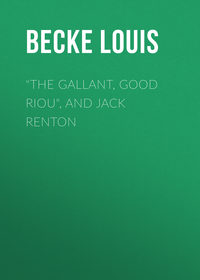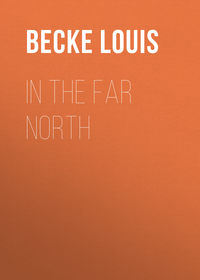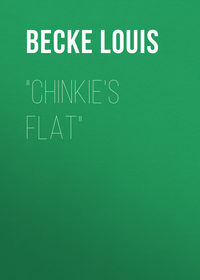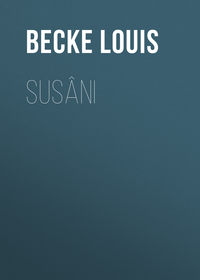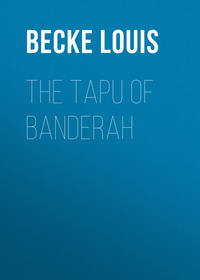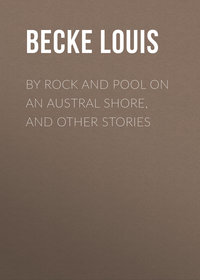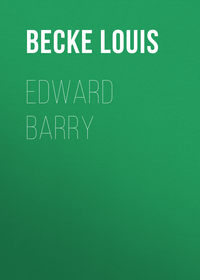 полная версия
полная версияRídan The Devil And Other Stories
Harry fired up quickly enough at the insulting words.
‘How dare you, sir, speak to me in this fashion? My father shall hear of this.’
‘Let me deal with him, the bloody-minded dog!’ said a voice.
It was that of Walter Trenfield, who, springing forward, presented my brother’s loaded fowling-piece at the minister’s head. ‘Listen to me, you beast in human form, you heartless fiend! I am going to send your poisonous soul to hell.’
He pulled the trigger, but the gun missed fire; then swiftly clubbing the weapon he brought it with terrific force against the clergyman’s chest and knocked him off the horse. The orderly at once turned, and fled as his master fell.
The Reverend Mr Sampson lay prone upon the sward, his once red face blanched to a deathly white, and over him, with grounded gun, stood the young convict.
My brother tried to take the weapon from him, but Trenfield tossed him aside with one hand as if he were a straw. Then for a minute he looked at the prostrate man in silence; once he raised the gun by the muzzle, then he threw it aside, and, kneeling beside the clergyman, placed his face close to his.
‘You dog, you dog, you damned dog! I could choke you now as you lie, you brute beast. But I will let you live, to go to hell in God’s own time, you cruel, flogging wretch! You murdered Thomas May—his rotting body is not a hundred yards away. May the stink of it reach the nostrils of Almighty God—and be in yours for ever!’
He rose quickly, took the saddle and bridle off the clergyman’s horse, and, striking the animal a sharp blow on the nose, sent it galloping away into the forest; then he returned and again stood over Mr Sampson, his face working with the violence of his passion.
‘Are you going to murder me?’ the minister asked gaspingly.
‘No,’ he replied savagely, kicking him again and again in the face, ‘but lie there, you bloody-minded swab, till I tell you you can go.’
And then, his passion spent, he turned to us with outstretched hand,—
‘God bless you all, young gentlemen! God bless you, Master Harry! and your good mother and Miss Frances and little Miss Olive. I am done for now. But tell Ruth that if I am taken I’ll die a man. And tell her, Master Harry, that—that—’
My brother grasped his trembling hand, as for a moment he stood, gun in hand, and swayed to and fro as if he were like to fall. Then he plunged into the forest.
One night, three weeks after this, and whilst Mr Sampson was recovering from his injuries, and a force of constables, with a black tracker, were scouring the country for Walter, my mother called we children to her bedroom. She had retired, but Ruth Kenna, with tears in her blue Irish eyes, stood beside the bed.
‘Quick, children,’ said my mother, in a whisper, ‘Ruth is going away. Quick, quick; kiss her goodbye.’
And then whilst we, wondering, put our arms around dear Ruth, my mother slipped out of bed, and taking some money out of a cabinet, put it into the girl’s hand, and said,—
‘Good-bye, Ruth. You’ve been an honest girl to us. May God bless and keep you always, my dear child, and do not fail to write.’
Next morning there was a great to-do, for Patrick Kenna’s house was found to be empty, and he and his daughter and Walter Trenfield were never seen again in our part. But away out on the horizon were the sails of a whale-ship which had been cruising about the coast for some days past; and though my mother kept her own counsel for a long year, we children soon knew that all three had escaped in the whaler, for my brother Harry had received a letter from Trenfield. It was handed to him by the aboriginal ‘King Billy,’ and contained only these words,—‘Good-bye, sir. Ruth and I and her father will be on the blue water before daylight.’
When two years or more had passed, my mother received a letter. It was written from Boston in America, and was signed ‘Ruth Trenfield.’
‘I am glad she and Walter are happy at last,’ said my mother, with the tears shining in her soft eyes.
A NORTH PACIFIC LAGOON ISLAND
Two degrees north of the Equator, and midway between the Hawaiian Islands and fair, green Tahiti, is the largest and most important of the many equatorial isolated lagoon islands which, from 10 deg. N. to 10 deg. S., are dispersed over 40 deg. of longitude. The original native name of this island has long been lost, and by that given to it by Captain Cook one hundred and twenty years ago it is now known to Pacific navigators—Christmas Island. Cook was probably the first European to visit and examine the place, though it had very likely been sighted by the Spaniards long before his time, in the days of the voyages of the yearly galleons between the Philippines and Mexico and Peru.
On the afternoon of December 24, 1777, Cook (in the Resolution and Discovery) discovered to leeward of the former ship a long, low, sandy island, which proved to be about ninety miles in circumference. It appeared to be an exceedingly barren-looking land, save on the south-west side, where grew a luxuriant grove of coco-palms. Here he brought his ships to an anchor, and partly to recuperate his crews, who were in ill health, and partly to observe an eclipse of the sun, he remained at the island some weeks. He soon discovered that the lagoon in the centre was of noble proportions, and that its waters teemed with an immense variety of fish and countless ‘droves’ of sharks. To-day it remains the same.
Fifty years passed ere this lonely atoll was visited by another ship, and then American and English whalers, or, as they were called in those days, ‘South Seamen,’ began to touch at the island, give their crews a few days’ spell amid the grateful shade of the palm grove and load their boats to the gunwales with fat green turtle, turtle eggs, robber crabs, and sea-birds’ eggs. From that time the place became well known to the three or four hundred of sperm whalers engaged in the fishery, and, later on, to the shark-catching vessels from the Hawaiian Islands. Then, sixteen years ago, Christmas Island was taken up by a London firm engaged in the South Sea Island trade under a lease from the Colonial Office; this firm at once sent there a number of native labourers from Manhiki, an island in the South Pacific. These, under the charge of a white man, were set to work planting coco-nuts and diving for pearl shell in the lagoon. At the present time, despite one or two severe droughts, the coco-nut plantations are thriving, and the lessees should in another few years reap their reward, and hold one of the richest possessions in the South Seas.
The island is of considerable extent, and though on the windward or eastern side its appearance is uninviting in the extreme, and the fierce oceanic currents that for ever sweep in mighty eddies around its shores render approach to it difficult and sometimes dangerous, it has yet afforded succour to many an exhausted and sea-worn shipwrecked crew who have reached it in boats. And, on the other hand, several fine ships, sailing quietly along at night time, unaware of the great ocean currents that are focussed about the terrible reefs encompassing the island, have crashed upon the jagged coral barrier and been smashed to pieces by the violence of the surf.
Scarcely discernible, from its extreme lowness, at a distance of more than eight miles from the ship’s deck, its presence is made known hours before it is sighted by vast clouds of amphibious birds, most of which all day long hover about the sea in its vicinity, and return to their rookeries on the island at sunset. On one occasion, when the vessel in which I was then serving was quite twenty miles from the land, we were unable to hear ourselves speak, when, just before it became dark, the air was filled with the clamour of countless thousands of birds of aquatic habits that flew in and about our schooner’s rigging. Some of these were what whalemen call ‘shoal birds,’ ‘wide-awakes,’ ‘molly-hawks,’ ‘whale birds’ and ‘mutton birds.’ Among them were some hundreds of frigate birds, the katafa of the Ellice Islanders, and a few magnificently plum-aged fishers, called kanapu by the natives of Equatorial Polynesia.
Given a good breeze and plenty of daylight, the whale-ships of the olden days could stand round the western horn of the island, a projecting point rendered pleasingly conspicuous by the grove of graceful coco-palms which Cook was so glad to observe so many years before, and then enter a deep bay on the north-west coast, where they obtained good anchorage in from fifteen to twenty fathoms of water of the most wonderful transparency, and within a mile of the vast stretches of white sandy beach that trend away for miles on either hand. And then the sailors, overjoyed at the delightful prospect of running about in the few and widely-apart palm groves, and inhaling the sweet, earthy smell of the thin but fertile soil, covered with its soft, thick bed of fallen leaves, would lower away the boats, and pulling with their united strength through the sweeping eddies of the dangerous passage, effect a landing on a beach of dazzling whites and situated in the inner south-west border of the wide lagoon.
On our first visit to the island, in 1872, we had some glorious fishing; and when we returned on board, under the rays of a moon that shone with strange, uncanny brilliancy, and revealed the coral bottom ten fathoms below, the scene presented from our decks was one of the greatest imaginable beauty, though the loneliness of the place and the absence of human life was somewhat depressing. We remained at the island for three days, and during our stay our crew of South Sea Islanders literally filled our decks with fish, turtle and birds’ eggs. Curiously enough, in our scant library on board the little trading vessel I came across portion of a narrative of a voyage in a South Seaman, written by her surgeon, a Mr Bennett, in 1838,7 and our captain and myself were much interested in the accurate description he gave of Christmas Island and its huge rookeries of oceanic birds.
This is what he says: ‘Here and there among the low thicket scrubs are vast rookeries of aquatic birds, whose clamour is deafening. They nest and incubate upon the ground, and show not the slightest fear of the approach of human visitors. Among the sooty terns, whose number it was impossible to estimate, were many hundreds of tropic birds and pure snow-white petrels.’ (He no doubt imagined the pure snow-white petrels to be a distinct species—they were young tropic birds.) ‘These latter, who flew with a gentle, flapping motion, would actually fly up to us and scan our countenances with an almost human expression of interest and curiosity.’ (Darwin, in his account of another Christmas Island in the Indian Ocean, also describes these gentle creatures as being of ethereal beauty.) ‘Some, indeed, permitted themselves to be caught, and although their delicate, fragile forms quivered with fear when they came in contact with our hands, they would, when released, return to us again and again, as if seeking to solve the mystery of what strange beings were these that had invaded their retreat. In one rookery there were many varieties of these oceanic birds, and a species of booby that seems to be peculiar to Christmas Island. In size and colour they much resemble the ordinary gannet of our cold northern seas. Their plumage is of a wondrously bright snow white, with the exception of the primary and secondary feathers of the wings, and the retrices or tail feathers, which are of a glossy black. The skin of the cheeks and chin is devoid of feathers, and of a jet black colour, the beak a delicate yellow blue, the legs bright blue. The solicitude of the female birds of this species for their offspring was most interesting to witness. Their nests were of the rudest description, being merely circular heaps of sand raised in the open plain and exposed to the fury of storms. As we approached the nests the mother birds settled themselves down upon their single egg and screamed loudly, but would permit themselves to be lifted off, yet struggled violently in our hands to get back again. Although there were thousands of these nests within a radius of an acre, a brooding hen might easily have been passed unnoticed, for her white plumage corresponded so well with the hue of the coral sands that one was apt to kick against the nest were it not for the agonised, barking note of the poor mother. The male birds, however, of this species did not show any marital concern for their partners. They were usually seated near the nests, but at once took to flight upon our approach. Further on, among a thicket of scrubby vegetation, we found a rookery of many thousands of the superb red-tailed tropic bird (Phaeton phoenicurus), also engaged in incubation. Their nests were mere circular excavations in the sand, under the shade of the bushes of the thicket. Each nest contained an egg of pure white, dotted with delicate lilac spots, and in size rather larger and rounder than that of the domestic hen. The females, as well as the males, made no attempt to escape from their nests on our approach, whether they had or had not the care of eggs, and consequently several of our crew, with innate Polynesian vanity, soon caught a number, and plucking out the two long scarlet tail feathers placed them in their hat bands.
‘A hundred yards away from the rookery of the tropic birds was one of a colony of the snowy tern before mentioned. These gentle, black-eyed creatures do not even pretend to construct a nest, but simply deposit a solitary egg upon the bough of a tree (like the gogo, or whale bird). They select for this purpose a tree destitute of foliage, and a branch of horizontal growth. It is strange that, notwithstanding the exposed situation of these eggs, they are very difficult to find; and it was not until long after the solicitude of the parent birds informed us that their spot of incubation was near that we could solve the mystery which attended their nursery. Each egg is the size of a pigeon’s, and marked with either blood or chocolate-coloured splashes and spots of irregular shape. Considering the slenderness of the branches on which they are deposited, it is remarkable that the eggs (which appear to be at the mercy of every passing breeze) should yet retain their extraordinary position during incubation.’ (Any Pacific Islander could easily have explained this seeming mystery. The shell, when the egg is laid, is covered with a strong adhesive coating. I have often seen a single egg, laid upon a slender branch, swaying about in a strong trade wind, and yet remain firmly in its position.) ‘What may be the habits of the newly-hatched birds we had no opportunity of learning, as none of the latter came within our observation.
‘Small reef birds (tern) were present in prodigious numbers, skimming the waters of the coast with an erratic, rapid, but yet graceful flight, like that of the stormy petrel. At night they assembled in vast numbers on an islet in the lagoon, to roost on the trees. They are about the size of an Australian snipe, and their forms are models of elegance and beauty. Their plumage is in true slate colour, the secondary wings are white, and a narrow white zone surrounds each eye; their legs and feet are a pale blue, with white webs.
‘Every now and then as we, during our visit, walked along the snow-white beaches, great crowds of golden-winged plover and tiny snipe sprang skyward, and swept in graceful gyrations over the broad expanse of water, till they settled upon some sandy spit or spot of projecting reef; and, indeed, the immense concourse or frigate birds, boobies, terns, petrels and other aquatic denizens of the island filled us with boundless astonishment.
‘At night time there crept out from their lairs in the loose coral shingle that lined the scrub at high-water mark, incredible numbers of huge “land lobsters”—the “robber crab” of the Pacific Islands. They all crawled to within a few feet of the placid waters of the lagoon, where they remained motionless, as if awaiting some event—possibly to prey upon the smaller species of crustaceæ and turtle eggs.’
Christmas Island, in its structure and elevation, much resembles Palmerston Island, Arrecifos or Providence Island (the secret rendezvous of Captain ‘Bully’ Hayes), Brown’s Range, and other low-lying atolls of the North and South Pacific. The greater part of the interior of the island is, however, despite the vast number of coco-nuts planted upon it during the past ten years, still sadly deficient in cheerful vegetation.
The waters of the lagoon vary greatly in depth, but generally are shallow and much broken up by sandy spits, reefs and huge coral boulders which protrude at low water, and the surface is much subject to the action of the trade wind, which, when blowing strong, lashes them into a wild surf; and the low shores of the encircling islets, that form a continuous reef-connected chain, are rendered invisible from the opposite side by the smoky haze and spume which ascends in clouds from the breaking surf that rolls and thunders on the outer barrier reefs.
In the interior no fresh water is obtainable, although in the rainy season some of a brackish quality can be had by sinking shallow wells. This water rises and falls in the wells in unison with the tides. Here and there are very extensive swamps of sea-water, evaporrated to a strong brine; the margins of these are clothed with a fair growth of the pandanus or screw-pine palm, the fruit of which, when ripe, forms a nutritious and palatable food for the natives of the Equatorial Pacific Islands.
The island where Captain Cook set up his observatory is but a small strip of sandy soil, clothed with a few coco-palms, some screw-palms (pandanus), and a thick-matted carpet of a vine called At At by the natives. The only quadrupeds are rats, and some huge land tortoises, similar to those of the Galapagos Islands. They are most hideous-looking creatures, and, being of nocturnal habits, like the great robber crab, are apt to produce a most terrifying impression upon the beholder, if met with in the loneliness of the night. The present human occupants of Christmas Island are, however, well supplied with pigs and poultry; and though this far-away dot of Britain’s empire beyond the seas is scarcely known to the world, and visited but twice a year by a trading vessel from Sydney, they are happy and contented in their home in this lonely isle of the mid-Pacific.
BILGER, OF SYDNEY
A death in the family brought about my fatal acquaintance with Bilger. A few days after the funeral, as my sister and I sat talking on the verandah of our cottage (which overlooked the waters of Sydney Harbour) and listened to the pouring rain upon the shingled roof, we saw a man open the garden gate and come slowly up to the house. He carried an ancient umbrella, the tack lashings of which on one side had given way entirely, showing six bare ribs. As he walked up the path, his large, sodden boots made a nasty, squelching sound, and my sister, who has a large heart, at once said, ‘Poor creature; I wonder who he is. I hope it isn’t the coal man come for his money.’
He went round to the back door and, after letting himself drain off a bit, knocked gently and with exceeding diffidence.
I asked him his business. He said he wanted to see my wife.
‘Not here. Gone away for a month.’
‘Dear, dear, how sad! Broken down, no doubt, with a mother’s grief. Is there any other lady in the family whom I could see?’
‘What the deuce do you want?’ I began angrily; then, as he raised his weak, watery eyes to mine, and I saw that his grey hairs were as wet as his boots, I relented. Perhaps he was someone who knew my wife or her people, and wanted to condole with her over the death of her baby. He looked sober enough, so, as he seemed much agitated, I asked him to sit down, and said I would send my sister to him. Then I went back to my pipe and chair. Ten minutes later my sister Kate came to me with her handkerchief to her eyes.
‘Do go and see the old fellow. He has such a sympathetic nature. I’m sure I should have cried aloud had I stayed any longer. Anyone would think he had known poor little Teddie ever since he was born. I’ve asked Mary to make him a cup of tea.’
‘Who is he?’
‘I don’t know his name, but he seems so sympathetic. And he says he should be so pleased if he might see you again for a few minutes. He says, too, that you have a good and kind face. I told him that you would be sure to take at least a dozen of those in cream and gold. There’s nothing at all vulgar; quite the reverse.’
‘What are you talking about, Kate? Who is this sodden old lunatic, and what on earth are you crying for?’
My sister nearly sobbed. ‘I always thought that what you derisively termed “mortuary bards” were horrid people, but this old man has a beautiful nature. And he’s very wet—and hungry too, I’m sure; and Mary looks at him as if he were a dog. Do try and help him. I think we might get one or two dozen cream and gold cards, and two dozen black-edged.
And then he’s a journalist, too. He’s told me quite a sad little story of his life struggle, and the moment I told him you were on the Evening News he quite brightened up, and said he knew your name quite well.’
‘Kate,’ I said, ‘I don’t want to see the man. What the deuce does he want? If he is one of those loafing scoundrels of undertakers’ and mortuary masons’ touts, just send him about his business; give him a glass of whisky and tell Mary to clear him out.’
My sister said that to send an old man out in such weather was not like me. Surely I would at least speak a kind word to him.
In sheer desperation I went out to the man. He addressed me in husky tones, and said that he desired to express his deep sympathy with me in my affliction, also that he was ‘a member of the Fourth Estate.’ Seven years before he had edited the Barangoora News, but his determined opposition to a dishonest Government led to his ruin, and now—
‘All right, old man; stow all that. What do you want?’
He looked at me reproachfully, and taking up a small leather bag, said that he represented Messrs –, ‘Monumental Masons and Memorial Card Designers and Printers,’ and should feel pleased if I would look at his samples.
He was such a wretched, hungry-looking, down-upon-his-beam-ends old fellow, that I could not refuse to inspect his wares. And then his boots filled me with pity. For such a little man he had the biggest boots I ever saw—baggy, elastic sides, and toes turned up, with the after part of the uppers sticking out some inches beyond the frayed edges of his trousers. As he sat down and drew these garments up, and his bare, skinny legs showed above his wrecked boots, his feet looked like two water-logged cutters under bare poles, with the water running out of the scuppers.
Mary brought the whisky. I poured him out a good, stiff second mate’s nip. It did my heart good to see him drink it, and hear the soft ecstatic ‘Ah, ah, ah,’ which broke from him when he put the glass down; it was a Te Deum Laudamus.
Having briefly intimated to him that I had no intention of buying ‘a handsome granite monument, with suitable inscription, or twelve lines of verse, for £4, 17s. 6d.,’ I took up his packet of In Memoriam cards and went through them. The first one was a hand-drawn design in cream and gold—Kate’s fancy. It represented in the centre an enormously bloated infant with an idiotic leer, lying upon its back on a blue cloud with scalloped edges, whilst two male angels, each with an extremely vicious expression, were pulling the cloud along by means of tow-lines attached to their wings. Underneath were these words in MS.: ‘More angels can be added, if desired, at an extra charge of 6d. each.’
No. 2 represented a disorderly flight of cherubims, savagely attacking a sleeping infant in its cradle, which was supported on either hand by two vulgar-looking female angels blowing bullock horns in an apathetic manner.
No. 3 rather took my fancy—there was so much in it—four large fowls flying across the empyrean; each bird carried a rose as large as a cabbage in its beak, and apparently intended to let them drop upon a group of family mourners beneath. The MS. inscribed said, ‘If photographs are supplied of members of the Mourning Family, our artist will reproduce same in group gathered round the deceased. If doves are not approved, cherubims, angels, or floral designs may be used instead, for small extra charge.’





